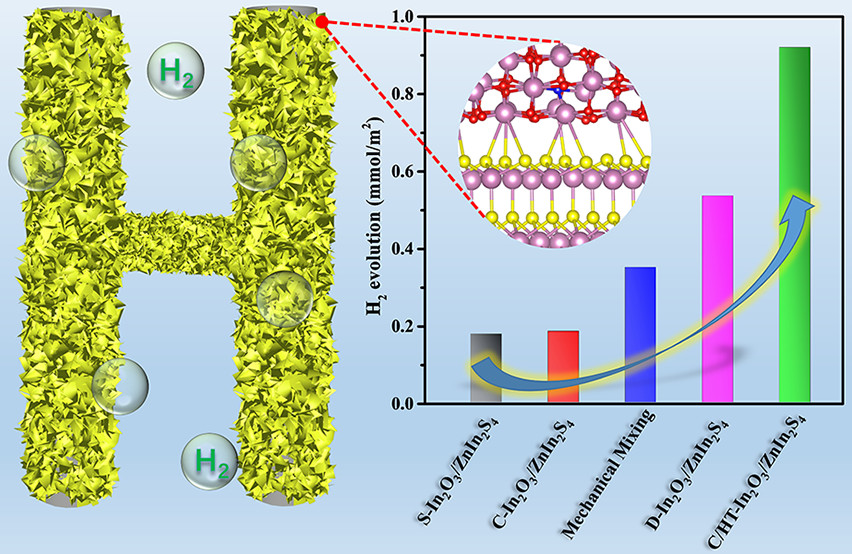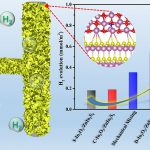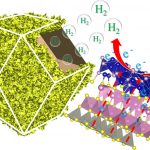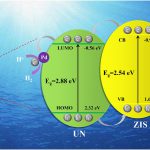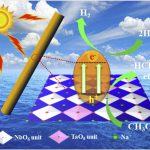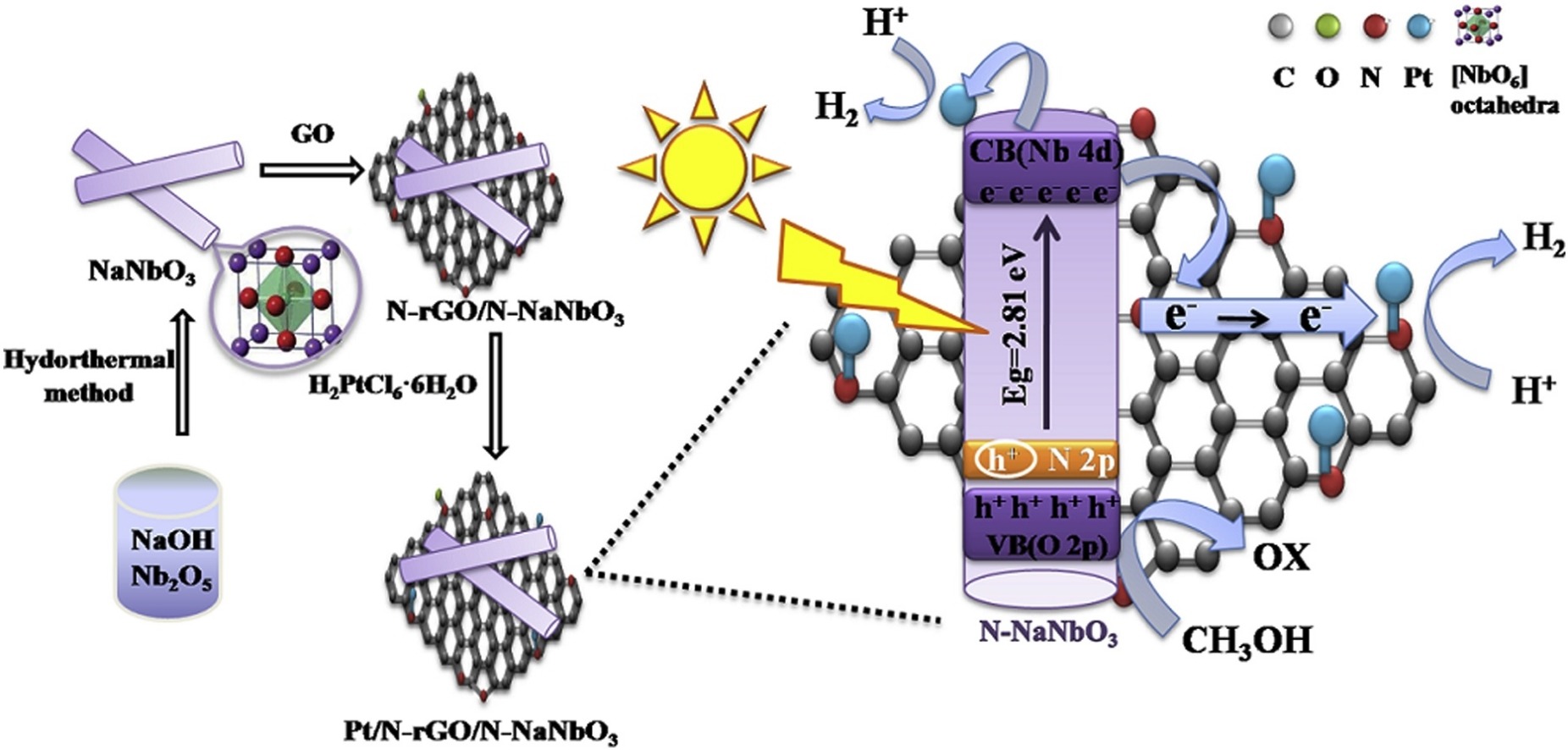A hierarchical hollow tubular In2O3/ZnIn2S4 heterostructure was rationally designed by growing thin-layered ZnIn2S4 on the surface of carbon-coated hollow tubular In2O3 (C/HT-In2O3) that was derived from In-MOF as a photocatalyst for the photocatalytic hydrogen evolution (PHE) reaction. The fast interfacial charge transfer and significantly enhanced PHE activity could be ascribed to the narrowed band gap of C/HT-In2O3 and the inclined formation of the staggered heterostructure between C/HT-In2O3 and ZnIn2S4. The former was caused by the coordinated In–N–In sites as revealed by EXAFS analysis, while the latter was proved by density functional theory (DFT) calculation. Additionally, the high electronic conduction of carbon for bridging charge separation from C/HT-In2O3 to ZnIn2S4 further accelerated the protonation process. It was found that the optimum H2 evolution rate reached 920.5 μmol/m2 when the mass proportion of counterparts was set at 1:2, about 13.2 and 6.6 times higher than that of pristine C/HT-In2O3 and ZnIn2S4, respectively. This work demonstrated the feasibility of establishing coordinated In–N–In sites in the interface of the carbon-coated HT-In2O3/ZnIn2S4 heterostructure for boosting charge transfer and introduced an ideal light-activated catalyst for PHE reactions from water.
相关推荐
Congratulations to Quan Zhang on recent paper published in “ACS Catalysis”In–N–In Sites Boosting Interfacial Charge Transfer in Carbon-Coated Hollow Tubular In2O3/ZnIn2S4 Heterostructure Derived from In-MOF for Enhanced Photocatalytic Hydrogen Evolution
Congratulations to Quan Zhang on recent paper published in “Journal of Colloid and Interface Science”Hierarchical fabrication of hollow Co2P nanocages coated with ZnIn2S4 thin layer: Highly efficient noble-metal-free photocatalyst for hydrogen evolution
Congratulations to Mengting Cao on recent paper published in “Journal of Materials Science & Technology”Facile construction of highly efficient MOF-based Pd@UiO-66-NH2@ZnIn2S4 flower-like nanocomposites for visible-light-driven photocatalytic hydrogen production
Congratulations to Qianqian Liu on recent paper published in “Journal of Materials Science & Technology”Highly efficient single-crystalline NaNb1-XTaXO3 (X = 0.125) wires: The synergistic effect of tantalum-doping and morphology on photocatalytic hydrogen evolution
Congratulations to Fengli Yang on recent paper published in “Applied Catalysis B: Environmental”Facile synthesis of highly efficient Pt/N-rGO/N-NaNbO3 nanorods toward photocatalytic hydrogen production
 Wei-Lin Dai Group
Wei-Lin Dai Group